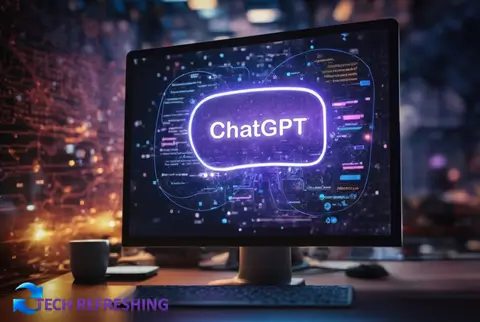New Features Set to Transform How Users Interact with AI-powered ChatGPT
OpenAI, a pioneer in artificial intelligence, is once again pushing the boundaries of what AI can do with its latest update to ChatGPT. While previous enhancements focused on improving the AI’s knowledge and responses, this update is set to change the way users interact with ChatGPT itself. OpenAI is introducing a revolutionary version of the service that will allow users to engage with the AI bot not only through text input but also via voice commands and image uploads.
Voice Interaction: A Seamless Conversational Experience
With the new voice interaction feature, users can now engage with ChatGPT by simply speaking their questions. This innovative addition promises to deliver an experience akin to conversing with virtual assistants like Alexa or Google Assistant. OpenAI aims to offer even more accurate responses, thanks to advancements in the underlying technology. As virtual assistants increasingly rely on Large Language Models (LLMs), OpenAI’s move places it at the forefront of this transformative trend.
OpenAI’s Whisper model plays a crucial role in enabling the speech-to-text functionality, ensuring a smooth conversational experience. Furthermore, the company is unveiling a groundbreaking text-to-speech model capable of generating remarkably lifelike audio from text inputs and a brief sample of speech. Users will have the option to select from five distinct voices for ChatGPT. OpenAI is also exploring various applications for synthetic voices, including a collaboration with Spotify to translate podcasts into different languages while preserving the original podcaster’s voice.
However, the advancement of synthetic voice technology also presents challenges, such as the potential for misuse by malicious actors. To address these concerns, OpenAI is taking a cautious approach, limiting the model’s use to specific cases and partnerships.
Image Interaction: Simplifying Information Retrieval
The image interaction feature is reminiscent of Google Lens, enabling users to snap photos of objects or scenes and prompt ChatGPT to provide relevant information. Users can further refine their queries using the app’s drawing tool or by speaking or typing additional questions alongside the image. This interactive approach streamlines the search process, offering a more efficient and intuitive user experience.
Despite its potential, image search comes with its own set of challenges. OpenAI has deliberately restricted ChatGPT’s ability to analyze and make direct statements about individuals, citing concerns related to accuracy and privacy. Consequently, the concept of AI identifying individuals through photos remains a futuristic vision.
OpenAI’s ongoing efforts to expand ChatGPT’s capabilities while addressing potential risks underscore the evolving landscape of AI development. As voice control and image search become increasingly prevalent, and ChatGPT evolves into a truly multi-modal virtual assistant, striking the right balance between innovation and safeguards will become ever more critical.
OpenAI’s latest updates bring us one step closer to the future of AI-powered interactions, where voice and images seamlessly complement text-based interactions. Users can anticipate a more immersive and intuitive experience with ChatGPT, all while responsible AI deployment remains a top priority for OpenAI.




